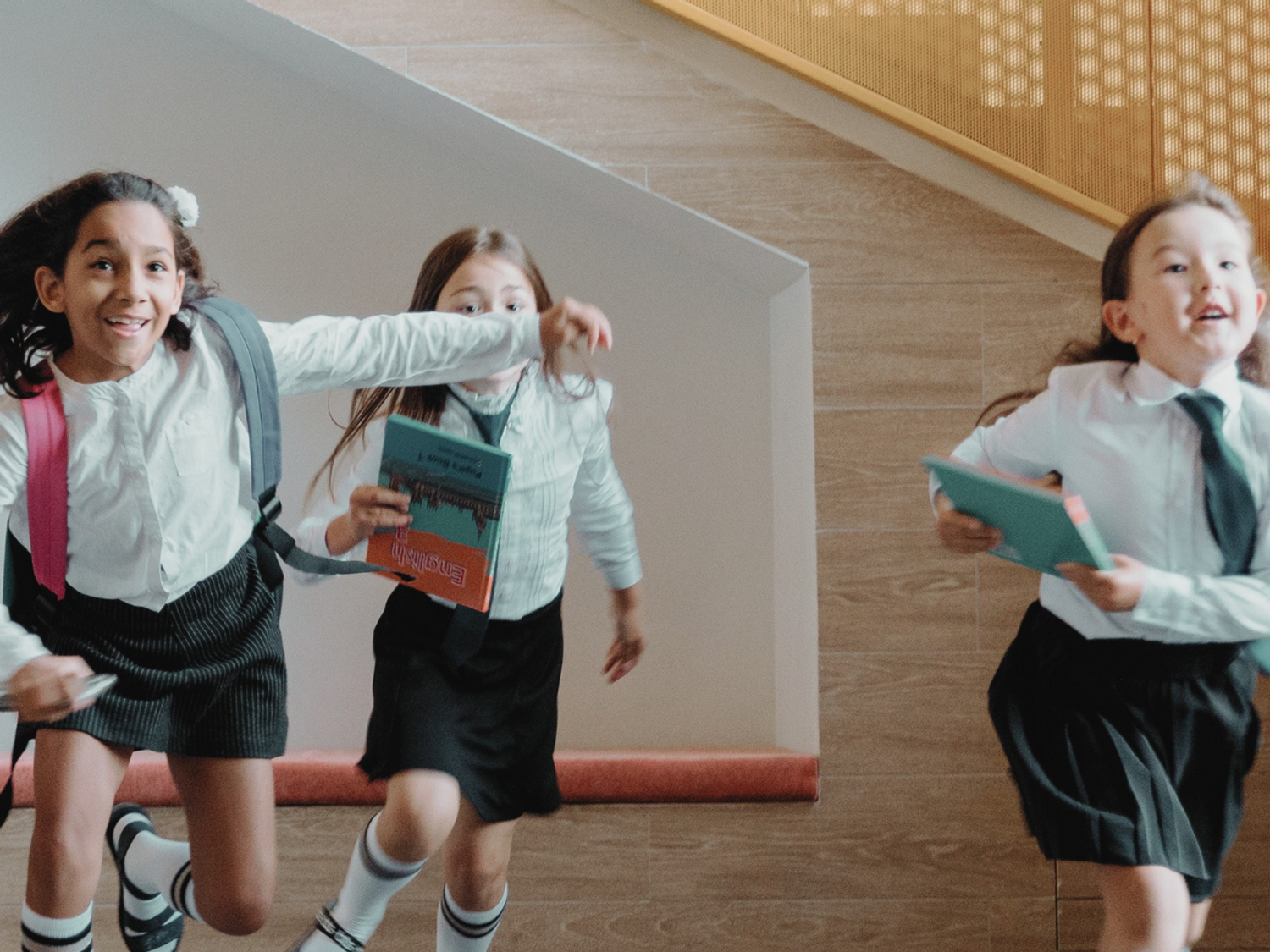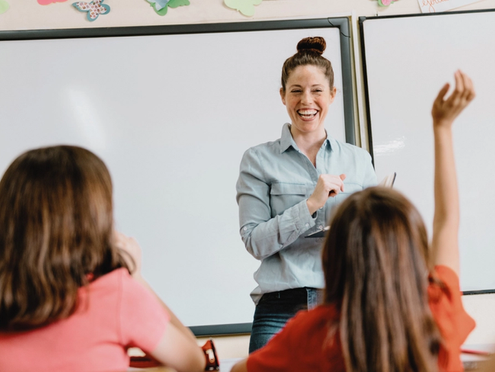In the UK, one in ten learners has special educational needs. 50% of these learners attend a mainstream state or independent school, which has its own special educational needs provisions. The remaining 50% of learners with SEN are unable to access the curriculum of mainstream education and instead attend special schools.
In this blog, we explore the four key categories of special schools, the difference between state-funded and independent special schools, and the key factors parents and guardians should consider when deciding which type of school is right for their child.
What are the four types of special schools?
Though 1 in 10 learners in the UK has special educational needs, this category includes a wide range of different needs and provisions. For example, special educational needs can range from learning difficulties to physical disabilities, from autism to ADHD, from physical adjustments to additional emotional and mental health support. Two children with the same diagnosis do not necessarily have the same educational needs, and therefore are not always suited to the same school setting.
To provide the best support for learners with special educational needs who cannot access mainstream educational settings even with SEN provisions, special schools fall into four categories:
- Communication and interaction
- Cognition and learning
- Sensory and physical needs
- Social, emotional, and mental health
Communication and interaction
Special schools which specialise in communication and interaction support learners who have difficulty speaking or understanding speech. These schools can provide excellent support for learners with special educational needs, especially those with autism who are more likely to struggle with producing and understanding spoken language, whether that is the language itself or social cues.
In these schools, learners are likely to have dedicated speech and language therapists and receive specialist support for their communication and interaction needs, helping to develop their communication skills and boost their ability to relate to others their age.
Cognition and learning
Special schools with a focus on cognition and learning support learners with moderate to severe learning difficulties. These schools can provide specialist interventions in subjects where learners may struggle, such as literacy, numeracy, overall comprehension, memory, and executive function, whether a learner has difficulty in one area or in all.
Some conditions which can require specialist cognition and learning support include dyslexia, dyscalculia, and dyspraxia. However, with the right SEN support, most learners with these conditions do well in mainstream education.
Special schools for cognition and learning are an option for learners with learning difficulties too restrictive for mainstream education, such as those needing specialist support in multiple subjects or when complex learning difficulties are accompanied by mobility and communication issues. In these instances, mainstream schools may lack the specialist support networks these learners need, making a special school a more suitable option.
If a learner’s special educational needs prevent them from accessing the curriculum of a mainstream school, they will likely make more progress at a special school suited to their needs.
Sensory and physical needs
Special schools with a focus on sensory and physical needs are suited to learners with sensory impairments, such as deafness and blindness. They can provide support for learners with physical disabilities that affect mobility, especially learners who require specific equipment for their mobility.
It’s important to recognise that sensory and physical needs do not necessarily make a learner less cognitively able than their able-bodied peers. For many learners with these needs, the right education, health and care plan (EHC) can make mainstream education accessible; this may be the better choice for a child who is cognitively able. Special schools for sensory and physical needs are mostly suited to learners with complex multi-sensory impairments or whose needs are complex, preventing them from accessing mainstream education even with additional SEN support.
On the other hand, for some learners, schools which build a community around a learner’s identity may be the best option for an able child. For example, a deaf child may thrive in a school for deaf learners and learners who have hearing impairments, as this allows them to become involved with the thriving deaf community.
Ultimately, deciding whether your learner with sensory and physical needs would be happier in a mainstream school or a special school comes down to the individual needs of your child, which may change over time.
Social, emotional, and mental health
Social, emotional, and mental health needs have historically been a complex form of special educational needs support. Before the SEND Code of Practice in 2014, SEMH was referred to as “emotional and behavioural difficulties”. This held negative connotations, condemning learners with these special educational needs as being “disruptive” or “difficult in the classroom”, rather than needing additional support.
One in two learners who are permanently excluded from schools in the UK have a social, emotional or mental health need, and one in three families in the UK contain someone with a diagnosed mental illness. The stigma behind social, emotional and mental health special educational needs has to change to provide the best possible resources for each learner.
The causes of social, educational, and mental health can include:
- Attachment history
- Past trauma
- Diagnosed mental health conditions, such as depression and anxiety
- Substance abuse
- Family dynamics
Of learners with diagnosed social, emotional, and mental health needs, only 1% will meet the expected standards of education set in the National Curriculum, making this category of learners one of the most in need of additional support.
Specialist SEMH schools feature a wide range of special educational needs support for their learners, as every learner will have a different and complex reason behind their needs. This support includes a flexible, diverse curriculum that can fit around a learner’s schedule, a focus on healthy student-student relationships, a wide range of qualification options that are both academic and vocational, and specialist mental health support and first aid.
Many learners with SEMH needs can thrive in a mainstream school. However, this can only be achieved with the right SEN support from the school. For some learners with SEMH, this support is not offered until behaviour is already considered “disruptive”, and for learners who are excluded from mainstream education, special schools for SEMH can be the only option.
If a learner with SEMH is to thrive in mainstream schools, the SEN support they need must be offered proactively and be flexible to suit each learner’s needs. Not every school is equipped to offer this, so the decision on whether a special school or a mainstream school is right for your child may rest on the level of support local mainstream schools are able to offer.
Choosing a special school for your child
If you are considering a special school education for your child, one of these four types of schools is likely to offer the support your child needs to thrive. However, much like mainstream schools, there are differences between special schools depending on whether they are maintained, non-maintained or independent.
Maintained special schools are schools which are funded by the government through local authorities, and non-maintained special schools are not funded through fees or through the state. Non-maintained special schools are instead funded by local charities and organisations as non-profits, providing specialist care.
Learners with special educational needs have the right to name non-maintained special schools in their EHC plans. This category can also include academy special schools.
Independent special schools are specific fee-charging schools that specialise in providing special educational needs support. While some are run in a not-for-profit structure, like non-maintained special schools, some do make a profit on fees.
Specialist resource provision
Most learners with special educational needs make better progress when in mainstream education. For this reason, some schools have created specialist resource provisions, such as specific units for certain needs and conditions, that allow learners to access mainstream schooling and achieve better results. These SRPs may include smaller group sizes, additional benefits, dedicated therapy options and specialist SEN support staff. These provisions allow learners who may not have initially been able to thrive in mainstream education to access the curriculum of their peers and, in most cases, make more progress.
However, for some learners, accessing mainstream education is not possible even with specialist resource provisions. For these learners, the best progress will be made in a school with the resources to offer the support they need.

Improve learners' literacy while saving time
Bedrock's literacy curriculum supports learners' attainment across all subjects.
How Bedrock’s curriculum supports learners with dyslexia and ADHD
While it is no substitute for an effective EHC and brilliant special education provisions, Bedrock’s literacy curriculum includes features found to be helpful for learners with cognition and learning difficulties such as ADHD and dyslexia.
Human-narrated
The entirety of Bedrock’s curriculum, including feedback, is human-narrated. This has been found to support learners with attention difficulties, as the human narration maintains focus and dual-codes the reading activities. As well as this, human narration can be helpful for improving overall reading comprehension in learners with dyslexia, as gaps in comprehension can be filled.
Video teaching
Bedrock’s grammar curriculum is largely taught through teaching videos, which provide visual explanations and examples for grammar skills used in context. This helps learners see visually how sentences are constructed, helping to overcome misconceptions caused by misreading sentences.
Accessible colours
The colours in Bedrock’s website and lessons have been selected to ensure that the colour contrast is accessible for learners with mild visual impairments.
Dual-coding
All taught vocabulary, both in Bedrock’s core curriculum and in Mapper, is accompanied by contextual images to reinforce new knowledge and provide multiple avenues for learning.
Block system
Learners are placed into Blocks on Bedrock based on their results in the Alpha test, completed at the start of a Bedrock learner’s journey. This means that no matter the age of the learner, they will be placed into the Block most helpful for their progress, even if this is significantly above or below their school year. So long as your learners are reading at a Year 3 (age seven to eight) level or higher, Bedrock’s vocabulary curriculum can support their progress.
Explicit vocabulary curriculum
In order to communicate thoughts and feelings effectively, learners must have the vocabulary to do so. Research has found that a low level of vocabulary knowledge has negative effects on learners’ mental health. An explicit vocabulary curriculum can be a beneficial feature of a SEMH curriculum for this reason, giving learners the tools they need to express themselves in a calm, safe manner.



